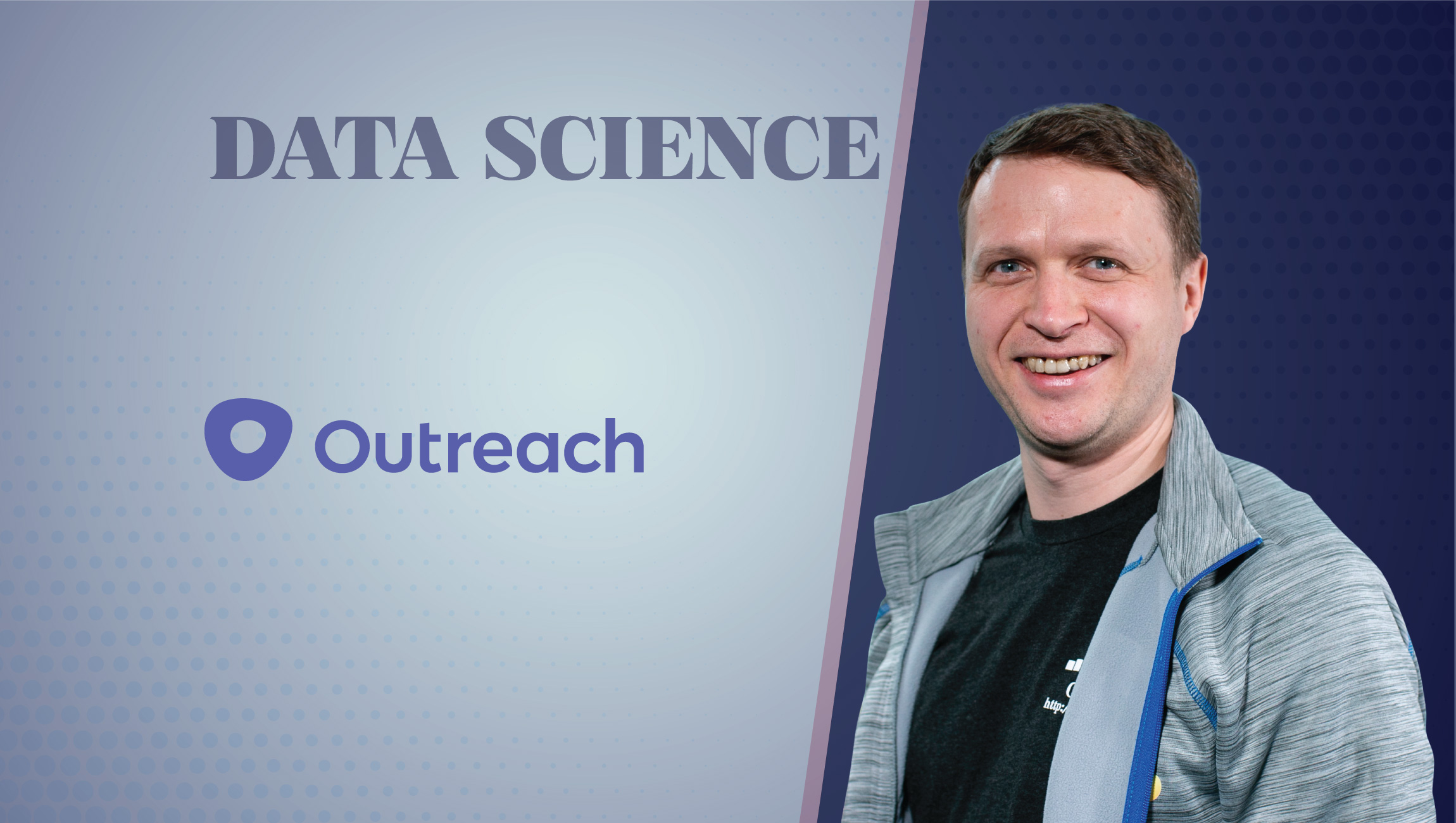Tell us about your role and the team/technology you handle at Outreach.io.
I’m a VP of Data Science at Outreach. My team uses Machine Learning (ML) and Natural Language Processing (NLP) to develop product features that help Sales reps be more productive. With more and more different tools and approaches to engage prospects, Sales reps are faced with a lot of choices and have to perform many auxiliary tasks before they can actually get to talk to customers. We use ML to remove as much of this complexity as possible – organize reps activities, automate auxiliary tasks and provide recommendations to help reps make better choices.
How big is your Data Science team?
We are currently 11 people.
We hear a lot about the exciting opportunities in Data Science. No one talks about the challenges and risks. What Data Science-related challenges do you deal with at Outreach?
I’d say the biggest challenge we face is obtaining high-quality data. To produce accurate results, ML algorithms need good data. Besides the Outreach application, we integrate with multiple systems: CRMs, Email providers, our partners. Getting accurate data from all of them and then cleaning and merging it is quite challenging.
Another big challenge is finding good metrics. One way to think of an ML algorithm is as an optimization process that maximizes or minimizes a certain metric. If the metric is wrong, no matter how good the algorithm is, it will produce wrong results. But finding the right metric is often challenging. Take, for example, measuring the quality of an email, which is still the most often used communication channel in Sales. What we get by default is opens, clicks, and replies. But none of those are good metrics – we found that more aggressive Sales emails typically produce more replies, but those replies are mostly negative. We certainly don’t want more of those! In order to develop a good metric for emails, we need to understand the sentiment of the replies, but that’s a hard NLP problem on its own, which we have made some progress solving but haven’t completely solved yet.
What makes Outreach different from other Marketing and Sales tech companies?
Currently, most Sales companies focus on point solutions for a specific Sales task, such as dialers, mailing tools, calendar tools, personalized video-making tools, and so on. Outreach focuses not on a specific task, but on orchestrating how all these different tools should be used together to engage a specific customer in the best possible way. The reason this is so exciting is that it brings a big change in both customer experience – customers are getting much more tailored personalized treatment, and in how Sales reps work – they are getting much more help and guidance.
Salesforce recently announced acquiring Tableau. Google is doing that with Looker. How do you see Data Science and Data Visualization becoming the core of every Marketing and Sales Technology offerings?
Visualization is important to help people make sense of data, notice patterns, derive insights. More and more people become better at working with data, and as a result, more and more people want to explore data on their own, create their own visualizations. This is very much true in Sales and Marketing. We often hear this need from Outreach customers. Building tools to provide such capabilities, in a consistent way, across multiple products and services, is challenging and time-consuming even for large corporations like Google and Salesforce, hence the acquisitions.
Tell us more about your roadmap for Data Science and AI in Outreach.
We are at the very beginning of our journey of transforming Sales from art into a science. Our eventual vision is to automate all non-selling tasks so that reps can spend 100% of their time talking to customers. While we are already able to save reps a lot of time and provide some actionable recommendations, we are not there yet. Our current goal is to develop a deeper understanding of communication between reps and prospects, that we can always have “GPS coordinates” of where exactly they are in the Sales process at any given point. This will enable us to take both Automation and Optimization to the next level.
Do you see Data Science becoming the core of all MarTech and Sales Tech companies? How can Product and Innovation teams work with the Data Science team to make these products better suited to market demands?
Absolutely. Whether internally or as part of the product, I believe Data Science is already a core part of most MarTech and SalesTech companies. I think those companies that don’t use data won’t survive very long.
Close collaboration between Data Science, Product, and Innovation teams is very important. Magic happens when a clear understanding of business needs is combined with a deep understanding of the data. To enable such collaboration, Data Scientists need to learn more about the business, get in front of customers and hear their needs. At the same time, Product Managers need to learn a little bit of Data Science and Machine Learning. Such a shared background makes collaboration much more effective.
What is your advice to Data Science Engineers, AIOps Analysts, and MarTech Product Managers?
I have two pieces of advice. First, you must use data when making decisions. If you don’t, no matter how experienced you are or how smart you are, you are going to get it wrong quite often. What I learned from years of working with different product groups is that we humans are very bad at judging the quality of ideas. At Bing where I used to work, we did a study which found that out of all ideas people had on how to improve the product only 1/3 was beneficial for users and business. 1/3 was neutral, and 1/3 was actually harmful. If we didn’t use data, we’d be as likely to get it wrong as we were to get it right.
Second, it’s not just about using data, it’s about using data correctly. For example, I think everyone has heard the phrase “Correlation is not Causation”. However, I’m amazed by how many people still make decisions based on Correlational data. The argument typically goes like this: “I only have Correlational data, and using some data is better than not using any data, so I’ll use Correlational data”. I’d like to warn you that this is very dangerous. This is like seeing that when it rains outside people carry umbrellas – a correlation – and then deciding to take away the umbrellas hoping it is going to stop the rain. Guess what – the rain isn’t going to stop, but you’ll get everyone really wet! This is what may happen if you base decisions on correlational data. As much as possible try to evaluate your ideas using proper scientific methods, such as randomized experiments.
Outreach, the leading Enterprise ready Sales Engagement Platform, accelerates revenue growth by optimizing every interaction throughout the customer lifecycle. The platform manages all customer interactions across email, voice and social, and leverages machine learning to guide reps to take the right actions.
Thousands of customers, including Cloudera, Glassdoor, Pandora, and Zillow, rely on Outreach to drive predictable and measurable growth, increase efficiency and effectiveness of customer-facing teams, and improve visibility into sales activity and performance.












